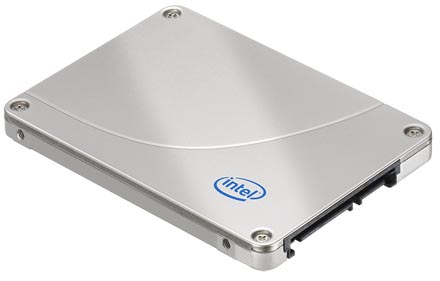I'm taking all the SSD credit

Just last week, I was moaning and groaning like a whiny little so and so that SSD hard disks were too expensive.
"If Intel brought down its prices by half," I complained, "I'd have to say I would seriously look at buying one of its top of the line SSDs, but that's unlikely to happen."
Little did I know that my wish would be granted, and in spectacular style. Just five days later, on Wednesday this week, Intel issued a press release noting it would shortly start selling what it said were the industry's first 35 nanometre SSDs, simultaneously lowering prices "by up to 60 per cent".

(Credit: Intel)
The disks have already received early praise from SSD guru (and friendly massive home cinema builder) Anand over at AnandTech, although of course the full benchmarks are yet to come out ... and it can take a while with such new technology before we really know what we're getting our hands on.
We quizzed Intel's Australian representatives on the availability of the drives in Australia, and received an answer that they should start flooding into the retail sector from mid-August.
The real question here, though, is will they come in at the right price point, given manufacturers' historical penchant for slamming a hefty premium onto retail prices for Australians compared with our fellow US geek brethren (who knows why, you'd think the shorter distance to the Asian manufacturing plants in Korea and elsewhere would allow them to sell them cheaper).
Intel hasn't yet been able to provide us with Australian prices.
However, looking a little closer at Intel's press release, it looks as if it cut the price in the US of the X25-M 80GB model (Intel has kept its model numbers for the new drives) down to US$225 for the new hardware from the original introductory price of US$595 a year ago. That's a cut of 62 per cent.
Note: this is the price for batches of 1000 bought by retailers and wholesalers, the only prices that Intel gives out. The 160GB version comes to US$440 each, down from US$945 at launch (a cut of 47 per cent).
Let's say we apply that same price cut, and then add on a generous 10 per cent retail mark-up cost so that the Aussie people actually selling this kit can take their cut. That would cut the 80GB X25-M drive down from AU$638, based on the current Aus PC-Market price, to around AU$266. The 160GB model would come down from AU$1155 to AU$597. Even cheaper prices will likely come through scouring price aggregators like staticICE; Aus PC-Market is typically a little expensive.
Still too pricey? Depends. If you're looking at the 160GB model, I'd say so. There aren't many people out there who really want to fork out almost $600 for a smallish hard disk. That price puts the 160GB model clearly in enthusiast territory ... if you have a really well-paying job, you wouldn't blink, but that isn't most of us.
However, the real advantage of SSDs comes when you're looking at system drives, especially Windows. If you, like I do, keep all of your files on a separate storage drive or two, and use your system drive only for loading your operating systems, applications and games, the 80GB X25-M starts to look very affordable.
Not as much so if you run more than one operating system, especially the space-eating Windows Vista and Windows 7 platforms, but for those that can keep their OS and application footprint within 80GB, the new 80GB X25-M is looking like a winner.
Then too, the word has already gone out that SSD rivals like OCZ are following Intel's lead and cutting prices in response. Looks like SSD drives might just be about to hit the mainstream.
I might even pick up one myself.